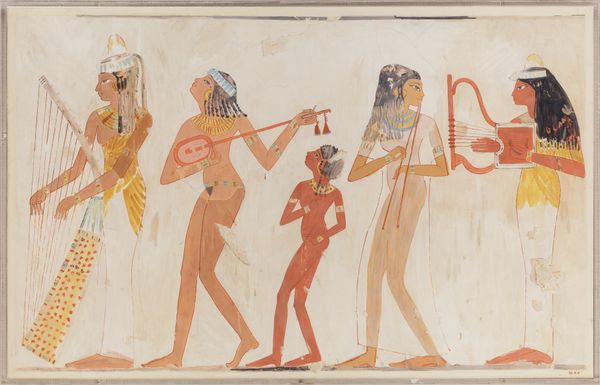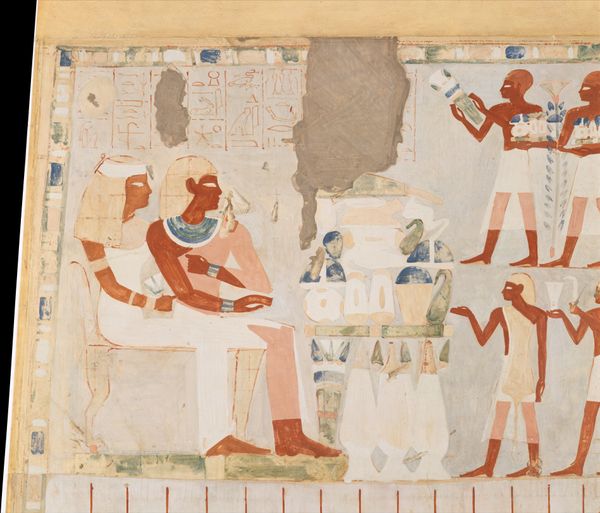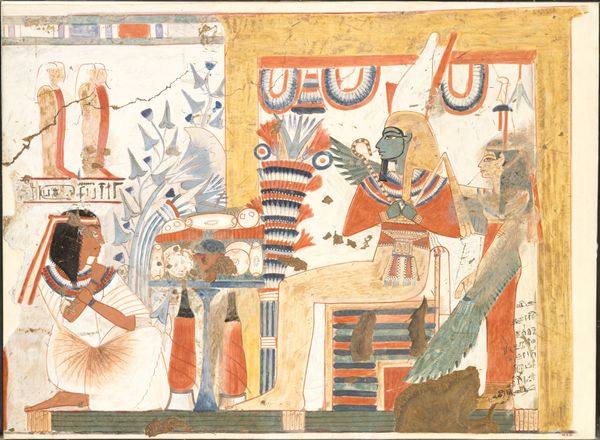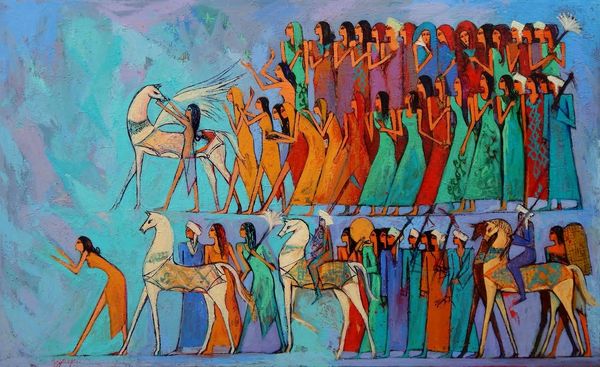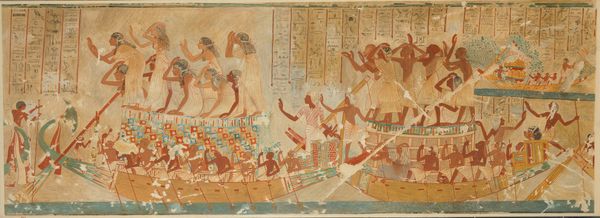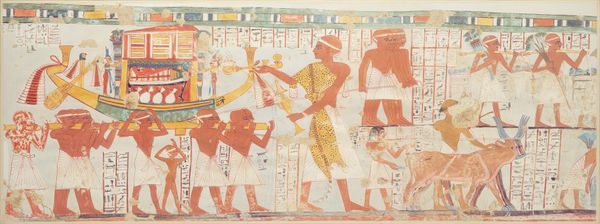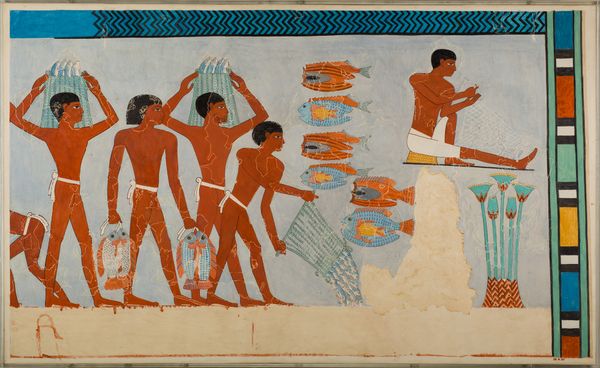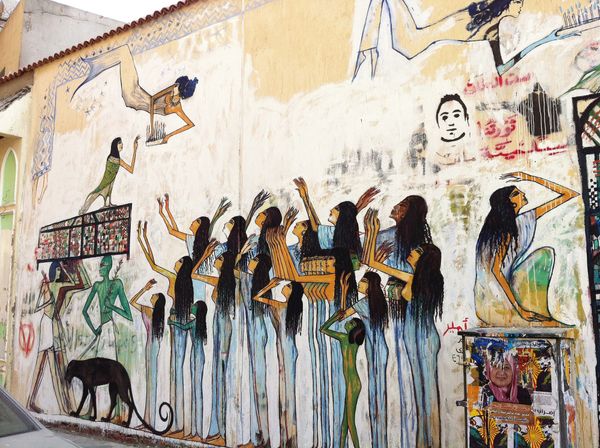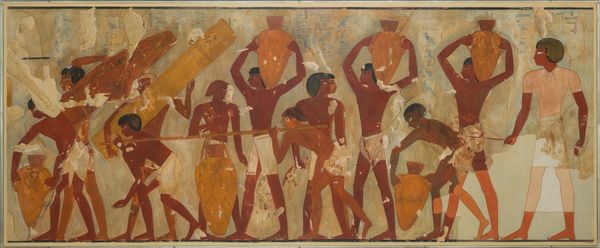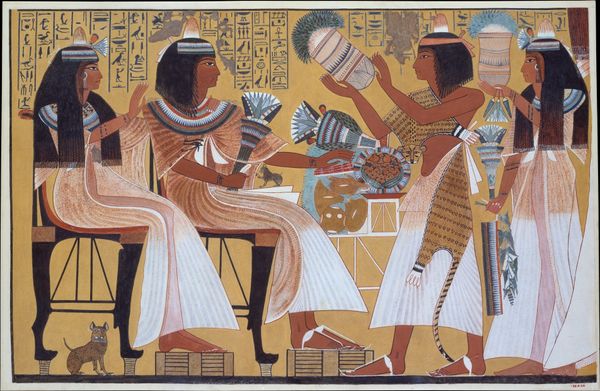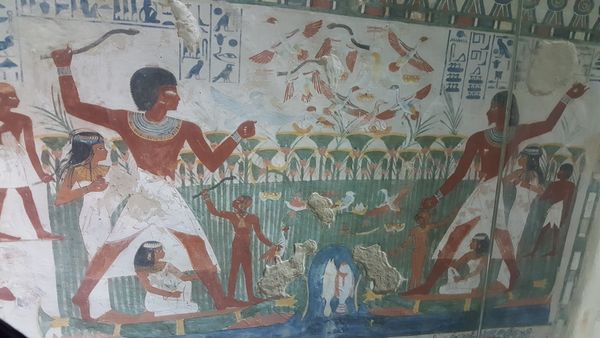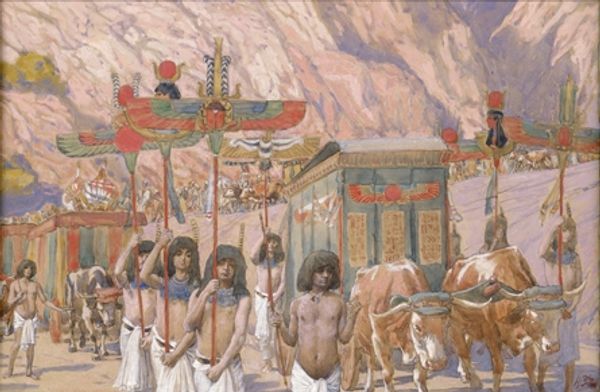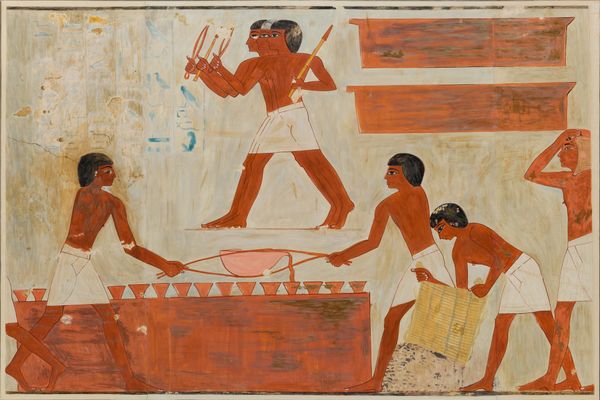
painting, acrylic-paint
#
narrative-art
#
painting
#
ancient-egyptian-art
#
acrylic-paint
#
figuration
#
mural art
#
handmade artwork painting
#
painting art
Copyright: Alaa Awad,Fair Use
Curator: Immediately, I am struck by the artist’s almost frenetic energy, even in depicting what I understand to be ancient traditions. The bold lines, the layering of blues and ochres, they create a vibrancy that feels remarkably contemporary. Editor: That's a great observation. Let me introduce this "Untitled" painting by Alaa Awad, working in the space of contemporary Egyptian art. The artist employs acrylic paint to reinterpret traditional Egyptian iconography, creating a dialogue between past and present. Curator: So, a reclaiming of sorts? I mean, the repetition of figures, the processions—they feel less about simple historical record and more about contemporary social structures, about who is being carried, and who is doing the carrying. The white robes are reminiscent of burial shrouds perhaps. Editor: Exactly. It speaks to issues of power, labour, and even perhaps collective memory in contemporary Egypt. These symbols carry potent social weight when re-contextualized in a contemporary artistic voice. What role do the gender politics and historical setting play? Curator: Looking at the rigid, repeated poses of those bearing the...chariot? Palanquin? And then the central figure, striding forward, radiating confidence – you see this very stark power dynamic re-enacted. It brings to mind questions of visibility, access, and even complicity, within modern hierarchies in Egypt, especially concerning gender. Editor: It also references a very specific visual language understood broadly in Egypt, given the permeation of Pharaonic imagery in political discourse and tourism. Awad utilizes a popular visual vocabulary to interrogate how those narratives serve present power structures. Think about the role museums play in constructing identity. Curator: This blend makes this such a potent work. It is not just a painting about the past; it's a commentary on the ongoing narratives that shape Egyptian identity today, particularly through class dynamics and a longing to return to powerful cultural moments in the making of political discourse. Editor: I agree. It demonstrates how art can be a powerful form of social commentary by actively engaging with historical images to provoke dialogue on our contemporary world. Curator: This has me thinking differently about the interplay of history, art, and societal structures. Thank you. Editor: The pleasure was all mine. These multilayered readings hopefully will inspire our listeners.
Comments
No comments
Be the first to comment and join the conversation on the ultimate creative platform.
